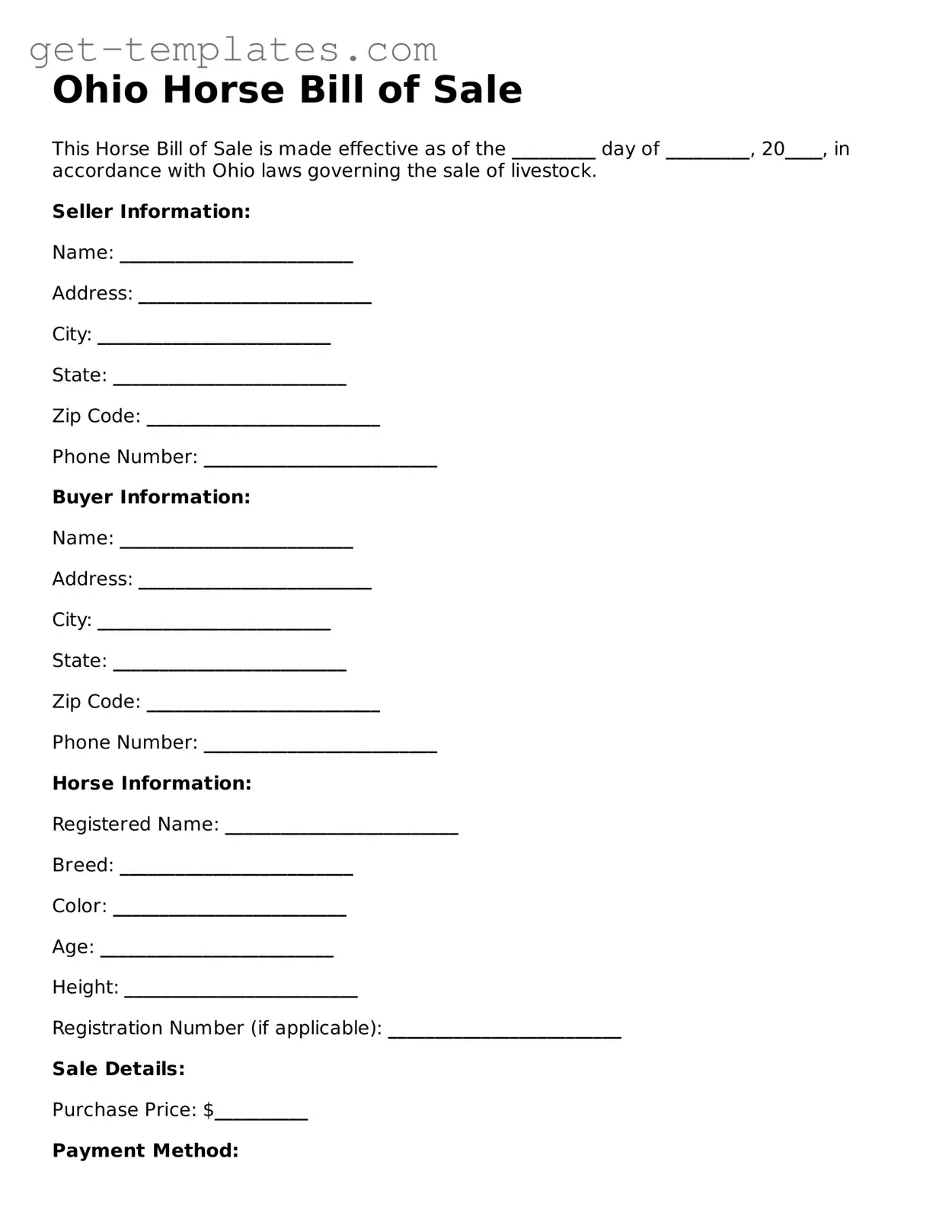Ohio Horse Bill of Sale
This Horse Bill of Sale is made effective as of the _________ day of _________, 20____, in accordance with Ohio laws governing the sale of livestock.
Seller Information:
Name: _________________________
Address: _________________________
City: _________________________
State: _________________________
Zip Code: _________________________
Phone Number: _________________________
Buyer Information:
Name: _________________________
Address: _________________________
City: _________________________
State: _________________________
Zip Code: _________________________
Phone Number: _________________________
Horse Information:
Registered Name: _________________________
Breed: _________________________
Color: _________________________
Age: _________________________
Height: _________________________
Registration Number (if applicable): _________________________
Sale Details:
Purchase Price: $__________
Payment Method:
- Cash
- Check
- Credit/Debit Card
- Other: _________________________
Representations and Warranties:
- The Seller represents that the Seller is the legal owner of the horse.
- The horse is free from all liens and encumbrances.
- The horse is sold "as is" without any warranties, expressed or implied.
This Bill of Sale constitutes the entire agreement between the parties. Both the Seller and Buyer affirm that they read, understand, and agree to the terms stated herein.
Seller Signature: ________________________ Date: ____________
Buyer Signature: ________________________ Date: ____________
